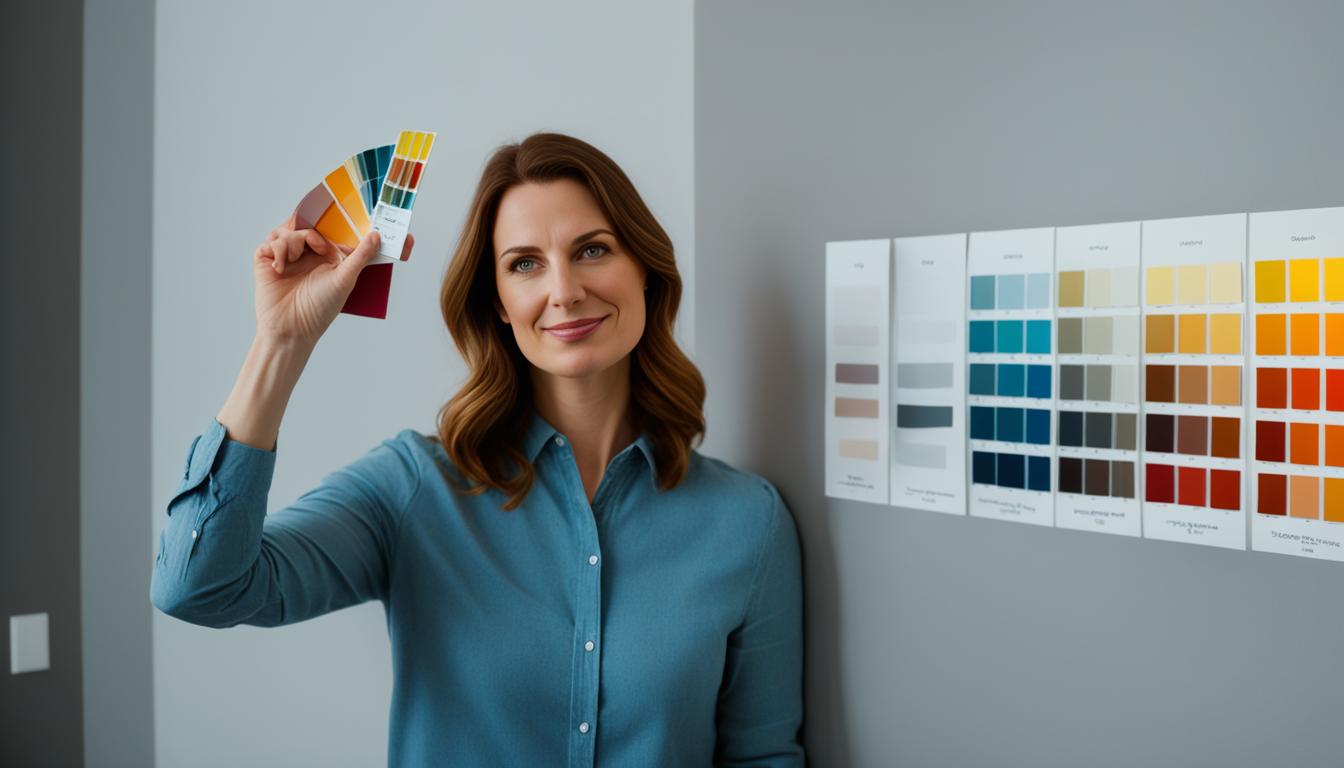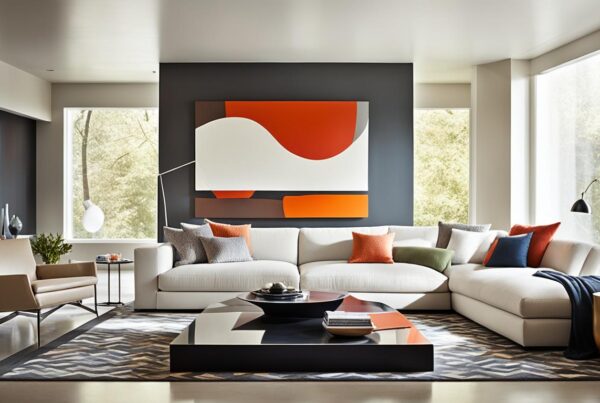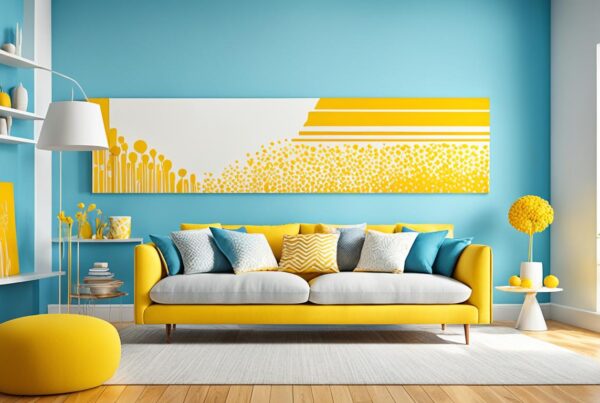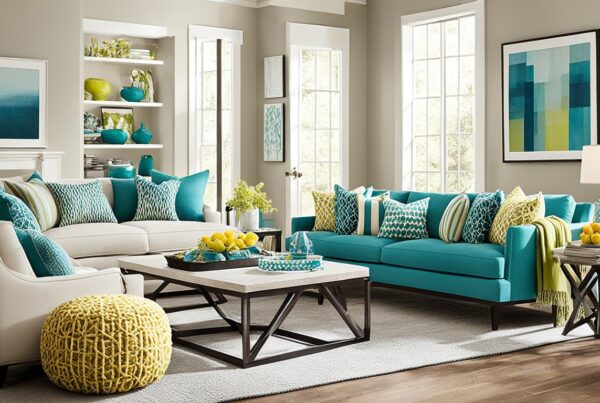Ever been in a room that’s just been painted and felt something was off? I sure have! The key to picking perfect paint colors for my interior painting tasks lays in the lighting. Light, whether it’s the golden sunset glow or bright noontime white, changes how paint looks on walls. Let’s explore how I tackle this to keep my home looking great all day.
First up, knowing how light reflects off paint colors is crucial. The Light Reflectance Value, or LRV, is crucial here. It shows how much light a color reflects. In north-facing rooms with cooler light, warm colors make it cozy. But south-facing rooms with a lot of light need cooler colors to feel right. Don’t overlook artificial lighting—its Kelvin measure can brighten dark spaces!
I always check the natural and artificial lighting in a room before choosing a paint color. It’s about how the color looks in real life, not just on a sample card. Ready to find the perfect color without the guesswork? Follow along for my top color selection tips.
Key Takeaways
- Analyze your room’s natural light—warmer colors for north-facing rooms, cooler colors for south-facing ones.
- Consider the Light Reflectance Value (LRV) to understand how much light your paint will reflect.
- Keep in mind that artificial lighting plays a significant role in room ambiance, especially in terms of Kelvin temperature.
- Paint swatches should be tested in the room at various times to observe how the changing light affects them.
- Remember, the perfect paint color should maintain its integrity and enhance the space as lighting conditions alter.
Understanding the Impact of Lighting on Paint Colors
Paint colors change under different kinds of light, like natural lighting or artificial lighting. Imagine a room in morning light. A soft taupe might look light and airy. But at night, under an LED light, it looks more calm. This shows how light and paint work together. They change the feel and use of a room.
It’s key to know about paint undertones. Light can make these undertones stand out or blend in. I will explain how daylight changes paint colors. And I’ll talk about how man-made light changes them too.
Paint colors in north-facing rooms can seem brighter. This is because of the cool light. But in south-facing rooms, warm light can make warm undertones pop.
Seeing how light reflection impacts color is helpful. It’s important to see how light in your room plays with your paint choices. Here are some tips to pick the best paint:
- Put paint samples on walls to see color changes during the day.
- Think about the color warmth of artificial lights. Warm bulbs make reds and yellows brighter. Cool bulbs highlight greens and blues.
Here’s a table showing how light types change how we see paint colors:
| Lighting Type | Color Perception under Natural Light | Color Perception under Artificial Light |
|---|---|---|
| Soft White LED | Makes warm colors more vivid | Enhances yellow and red undertones |
| Bright White Fluorescent | Sharpens cool colors | Makes whites appear crisper |
| Daylight LED | Most true to natural daylight | Makes blues and greens more pronounced |
When choosing paint, consider all lighting types. This will make sure your walls always look right. Whether it’s day or night, natural or artificial light, your walls will match your home’s style.
Assessing Your Room’s Natural Light Exposure
Choosing paint colors means understanding your room’s natural light exposure. The room orientation changes how light impacts colors at different times. North-facing rooms usually get a soft light which might dull bright colors.
In such rooms, warm shades add life. South-facing rooms get more intense light. This makes colors look brighter, but can also make light shades seem faded.
East and west-facing rooms face changing light, affecting paint from morning to night. Choosing the right paint hue selection for these rooms needs careful thought.
| Room Orientation | Morning Light | Noon Light | Evening Light |
|---|---|---|---|
| North-facing | Soft & Subtle | Consistently Cool | Dim & Cool |
| South-facing | Bright & Cheerful | Intense & Vibrant | Strong & Warm |
| East-facing | Bright & Warm | Light Reduces | Cooler & Softer |
| West-facing | Dim & Cool | Moderate & Warm | Fiery & Intense |
Testing paint patches on different walls helps. Observe them during the day to see how natural light exposure and room orientation affect colors.
This hands-on method aids in choosing colors. They will not only look amazing but also stay true under different lighting.
Choosing Paint Colors for Low-Light Rooms
When facing the task of painting a low-light room, start by choosing warm colors. Pick soft yellows, creamy beiges, or subtle off-whites. These colors make the room feel bigger and brighter.
It’s smart to pick paint with a high Light Reflective Value (LRV). Aim for an LRV above 60 for a brighter feel. High LRV colors make rooms look bigger, which is great for dark spaces.
Choosing the right colors can make a dim room feel cozy and inviting. Adding mirrors or metallic items can help too. They reflect light, making the room brighter.
- Yellow hues to warm up the space
- Beige for a neutral, bright feel
- Off-white to maximize light reflection
In paint colors for dark rooms, your goal is more than just brightening. You want to add depth and warmth. Warm paint colors fight off the gloomy light, making the room comfy and inviting.
Selecting the Right Bulbs to Complement Your Colors
Choosing the right lights for your home is as key as picking the perfect paint. The color temperature of light can change how a room looks. Lights have a warmth or coolness measured in Kelvin. This affects how paint colors look.
If your kitchen is blue, it might look greenish in certain lights. This can happen if light from outside changes its color. Warm lights can fix this by making the color true to what you picked. It’s amazing how light can change the way we see colors.
For a garage painted in dark colors for a modern look, using daylight bulbs can help. These lights make colors stand out and keep the garage bright. Playing with the Kelvin scale and paint colors can create great results. It’s about blending light and paint colors so they look and feel right.
FAQ
What should I consider for interior painting when it comes to lighting?
For interior painting, think about both artificial and natural light. They change how colors look at home. Light from bulbs and daylight affect the room’s look and feel. It’s key to see how different lights affect paint colors during the day.
How does light reflection impact my choice of paint colors?
Light reflection helps decide how bright a paint makes a room. This is shown by the paint’s Light Reflectance Value (LRV). You can find it on paint cards or online. Brighter colors have high LRVs and brighten dark rooms. Dark colors have low LRVs and can make small rooms feel crowded.
How do I assess the natural light exposure of a room when selecting paint colors?
Look at how much sunlight your room gets to pick paint colors. North-facing rooms get cooler light, so use warmer colors. South-facing rooms get more intense light, so cooler colors work better to balance it.
Can the direction of a room’s windows affect paint color brightness?
Yes, the window direction changes paint color brightness. East and west-facing rooms see big light changes, affecting the paint’s look. Paint samples help you see how color shifts with the light.
What are the best paint colors for low-light or dark rooms?
Choose paints with high light reflectance or warm tones like yellow or beige for dark rooms. They make the room feel welcoming and bigger by reflecting light well.
How do I choose lighting that complements my wall color?
Pick lights by their color temperature and effect on wall color. Warm bulbs enhance warm colors and soften cool tones. Cool bulbs brighten spaces and match well with blues and greens. Test bulbs in your space to see how they look with your paint.
Why is it important to consider paint undertones in relation to lighting?
Paint undertones change a room’s mood and look under different lights. Natural and artificial lights can highlight or hide these undertones. By picking the right undertones, your colors will fit your design goals in any light.
Should I use different types of lighting to highlight my interior painting?
Absolutely! Using different lights can showcase your painting choices and add depth. Overhead lights, table lamps, and track lighting can change how wall colors look. Try different lights to get the look you want at home.
How does room orientation affect my color selection for interior painting?
Room direction impacts your color choices because it influences natural light. North-facing rooms do well with warm colors to warm up the cool light. South-facing rooms can handle cooler colors due to lots of sun. See how the light affects your room at different times to choose wisely.
What’s the best way to test paint colors with my home’s lighting?
Test paint colors by painting large samples on your walls. Watch how sunlight and house lights change the paint’s look. This ensures the color stays true in different lights and matches your vision.




